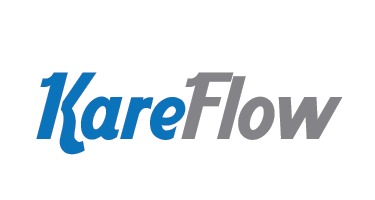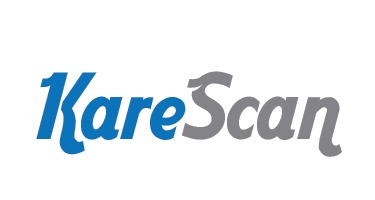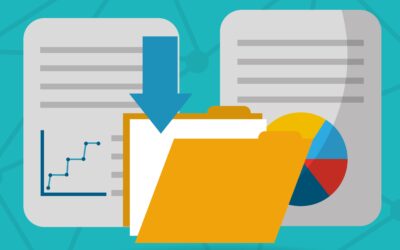Mastering the Symphony of Progress: Workflow Automation in the Digitalization Era
In the ever-evolving landscape of business and technology, digitalization stands at the forefront of revolutionary change, enhancing efficiencies, reducing cost, and delivering unprecedented value to stakeholders. Almost every business is in some form of a Digital Transformation journey… and I was fortunate to be involved in it in 2012 at the Stanford GSB, when I was working at the GSB. Every CIO/ CTO is talking or thinking about implementing digital transformation. Yet, the key to unlocking the full potential of digital transformation lies in a symphony between technology and strategy — a rhythm orchestrated through workflow automation.
This blog offers a pragmatic approach to integrating workflow automation with digitalization to fuel your enterprise’s digital transformation efforts.
Understanding Digitalization and Workflow Automation
Digitalization is the process of converting information into a digital format, while workflow automation refers to the design, execution, and automation of business processes based on workflow rules where human tasks, data, or files are routed between systems or people according to predefined business rules.
To appreciate their relationship, imagine digitalization as the foundation of a modern skyscraper, and workflow automation as the intricate network of elevators and services that allow it to function smoothly and efficiently.
Step 1: Assess and Plan
For ex: In the financial sector, begin by assessing existing processes. Identify tasks prone to errors and delays, such as manual data entry in accounting or paper-based approval workflows for financial transactions. The goal is to streamline operations for efficiency and accuracy.
For instance, a financial institution may assess its account reconciliation processes to identify areas where automation can reduce errors and save time.
Step 2: Choose Appropriate Tools
After assessment, explore tools tailored for financial processes. Consider adopting financial management software like QuickBooks or enterprise resource planning (ERP) systems like SAP. These tools offer scalability, integration capabilities, and can align with digital strategies. For example, a bank may implement an advanced fraud detection system that integrates with its core banking software.
Step 3: Design Your Workflows
Collaborate with stakeholders to design workflows that adhere to financial regulations and best practices. It involves identifying key processes, mapping current workflows, and integrating technology solutions for efficiency and compliance. Emphasis should be placed on tasks that are cumbersome and error prone, ensuring data security. Continuous improvement through regular monitoring, feedback collection, and adaptation to regulatory changes is crucial for maintaining effective financial workflows.
Step 4: Test and Implement
Before full-scale implementation, test the automated workflows in a controlled environment. For instance, a financial advisory firm might pilot test an automated investment portfolio rebalancing system with a subset of client portfolios. Gather feedback, analyze results, and refine the automated processes. Once validated, roll out the automation across the entire client portfolio.
Step 5: Monitor and Optimize
Use analytics to monitor the performance of financial workflows. For example, track the time taken for loan approval processes or analyze the accuracy of automated credit scoring models. Identify opportunities to optimize, such as incorporating machine learning algorithms for risk assessment to enhance decision-making in loan approvals.
Step 6: Scale and Innovate
Building on successful implementations, explore opportunities to scale automation in the financial sector. Consider expanding automation to areas like automated billing in insurance or implementing chatbots for customer support in banking. Encourage innovation by exploring emerging technologies such as blockchain for secure and transparent transactions.
By applying these steps in the financial sector, organizations can leverage automation to enhance operational efficiency, reduce errors, and stay compliant with financial regulations. Examples like automated loan processing, fraud detection, and investment portfolio management showcase the transformative potential of workflow automation in the financial industry.
The harmonious integration of workflow automation and digitalization can lead to astonishing orchestration of business outcomes such as:
• Enhanced Productivity: Automating routine tasks liberates the workforce to focus on strategic and creative endeavours that drive business growth.
• Improved Accuracy: Workflow automation reduces the risk of human error, improving the quality of work and reliability of data.
• Consistency: Standardised processes ensure consistent outcomes, solidifying the brand promise and customer experience.
• Agility: Automated workflows allow businesses to adapt quickly to market changes, maintaining a competitive edge.
• Data-Driven Decision Making: Real-time data insights fostered by digitalization enable informed decisions and strategic pivots.
Conclusion: Orchestrate Your Future
Digital transformation is not a destination but a continual journey. As your expedition into digitalization progresses, let workflow automation serve as your compass and guide, ensuring that each step you take is calculated, strategic, and harmonious with your overarching vision. The confluence of digitalization and workflow automation is where the magic unfolds — where the full suite of your enterprise’s capabilities are played in perfect harmony.
Transform your business by embracing the symphony of progress today.
Engage with Us
Are you poised to harness the power of workflow automation in your organization’s digitalization journey? NeoLotex expedites your journey by providing a suite of tools, especially, KareFlow our Low code workflow automation solution. We helped our clients’ in financial services to implement work flows, making it much easier for them to help their own clients.
To keep abreast of the latest in workflow automation, subscribe to our newsletter and never miss a beat in the digital transformation rhythm. Your future is orchestrated by the choices you make today—choose progress, choose innovation, choose NeoLotex.








